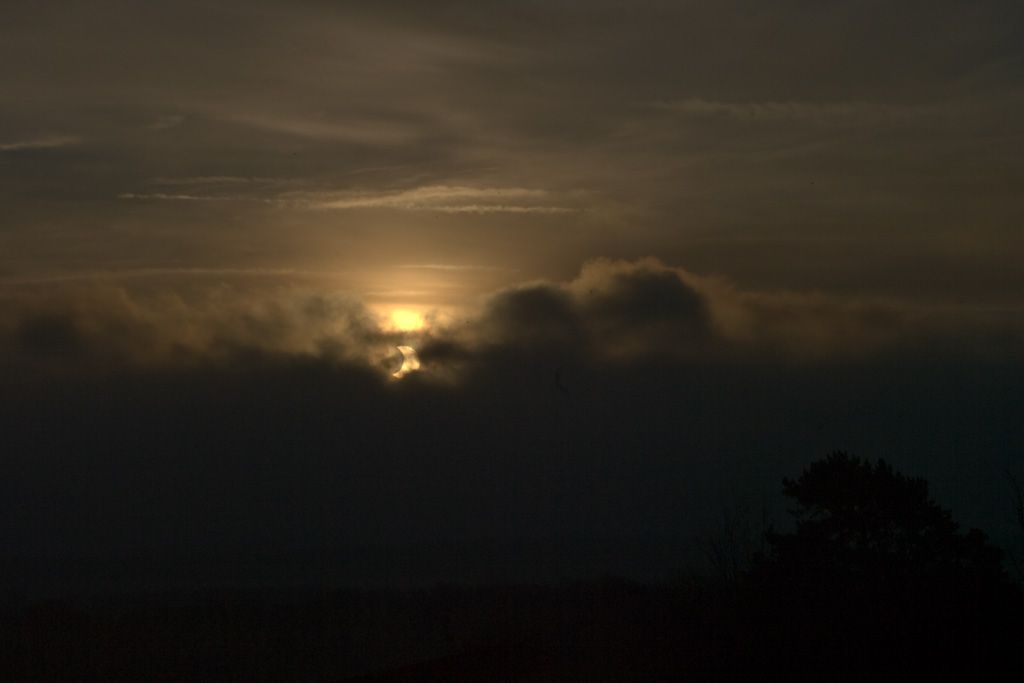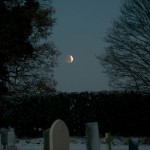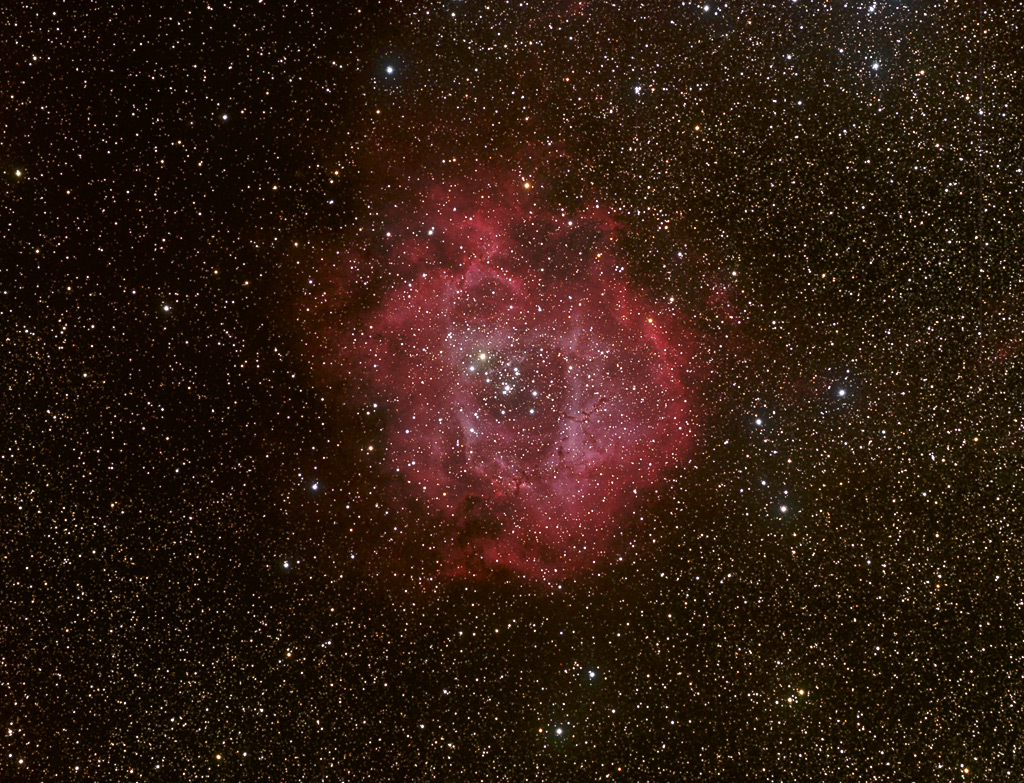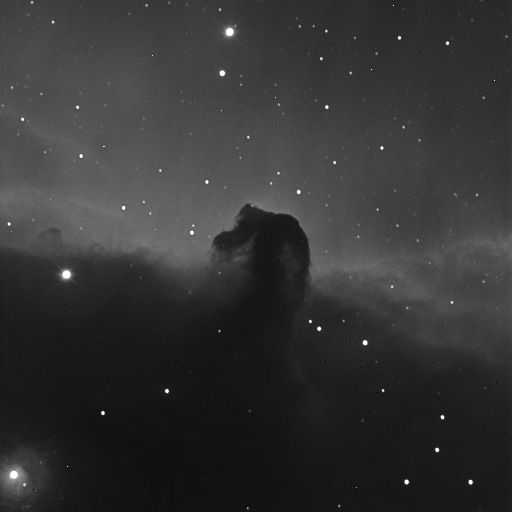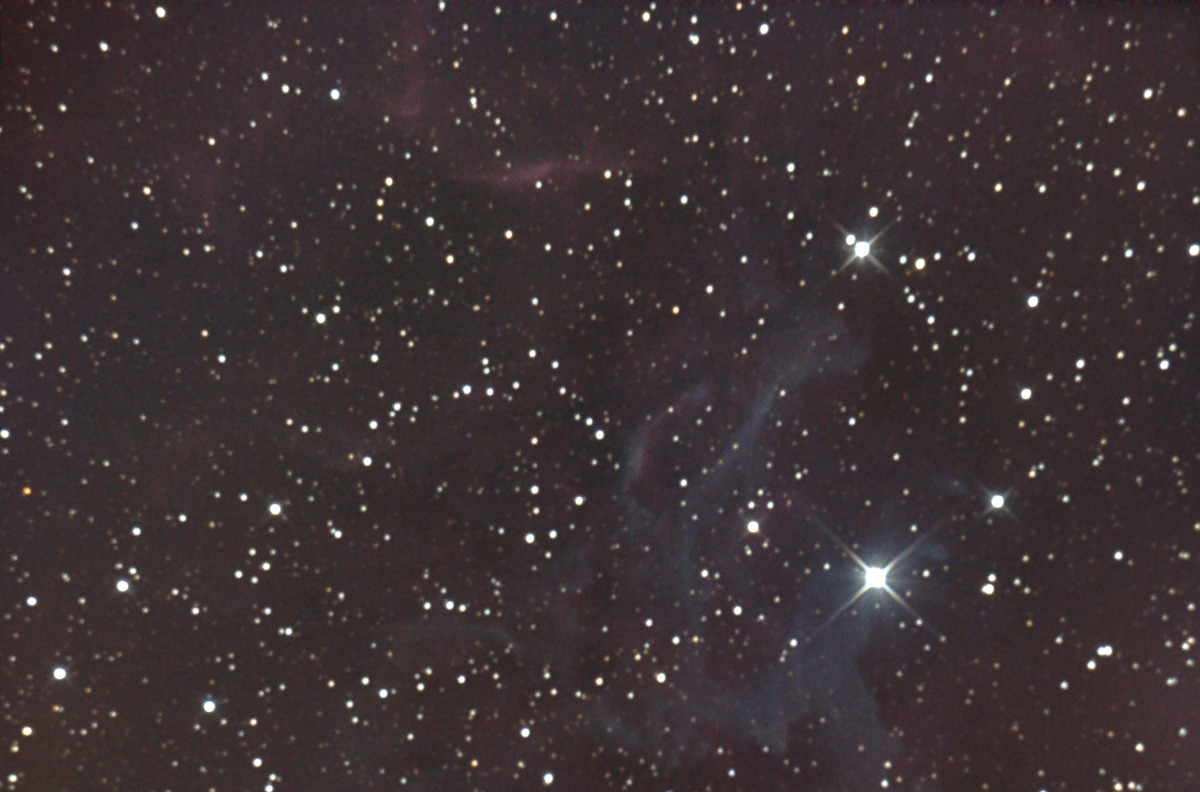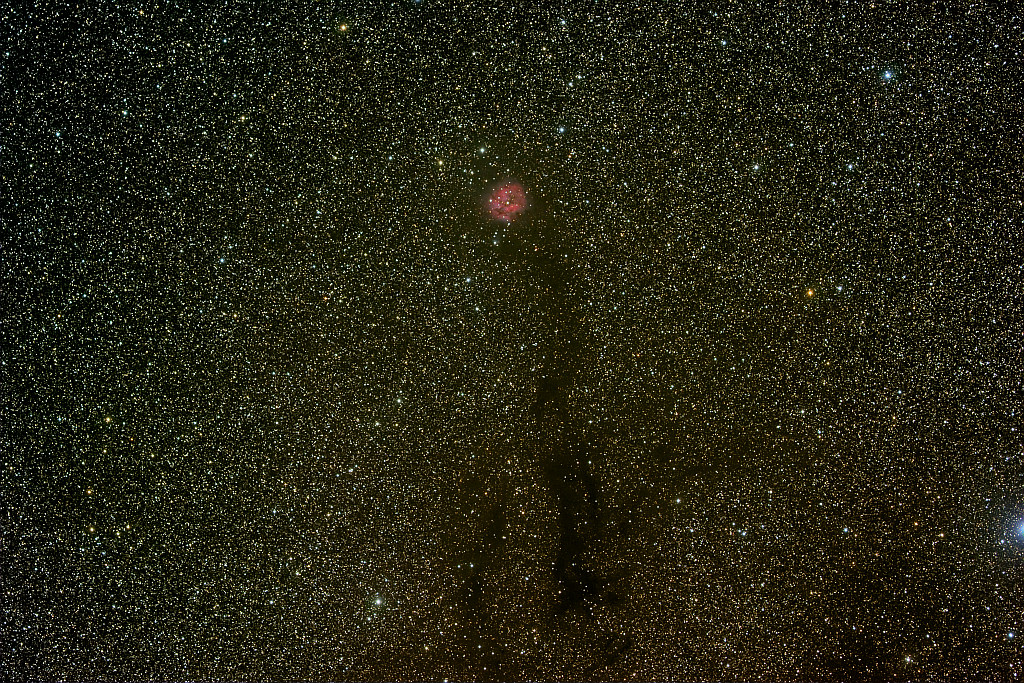Just as I thought I wasn’t going to see it the cloud dispersed sufficiently and there it was. First picture is here, more to follow.
Author: admin
More eclipse pictures
In the last picture, the crescent of the moon is almost invisible against the dawn light.
Lunar eclipse
Tuesday morning was bright and clear (and minus 9C) when I left the house at 06:30 to walk to the top of the lane. As I setup the camera and tripod, the Earth’s shadow was just starting to take the first bite out of the lunar disk. Sticking mainly with the Canon 75-300 zoom I took pictures until the moon faded into the dawn sky as it reached totality. At 07:30 I took this wider field image.
Camera: Canon 350D
Lens: Canon 75-300 zoom @ 125mm f/4.5
ISO: 400, 1/3 sec
The Rosette nebula is a large cloud of ionised hydrogen gas in the direction of the constellation Monoceros. Distance estimates vary but it’s probably 5000 light years distant with an overall diameter of 130 light years. The nebula has the Caldwell number 49 and the cluster of stars at the centre is separately listed as Caldwell 50 (also NGC 2044).
While the central cluster is visible under dark skies with binoculars the nebula is very difficult to see visually as it’s about 1 degree in diameter with a very low surface brightness. The red colour is also not visible. Relatively short CCD images however, show what a spectacular object this is.
Telescope: GRAS-14 – Takahashi FSQ-106ED
Camera: SBIG STL-11000M-ABG
This is one that’s featured in previous images of mine but this time it’s in close up courtesy of GRAS-6, an RCOS 16? Ritchey-Chrétien Cassegrain with a focal length of over 3.5 metres. With a full moon in the sky I used an Ha filter on the camera and binned the pixels 2×2 to reduce the sub-frame exposure length to a manageable 5 minutes. This image is a stack of 6 exposures.
Set against the bright emission nebula IC434, the Horsehead is a cloud of cold, dark gas in the constellation of Orion.
Galaxies tend to come in groups, and, after the local group this is the next nearest with M81 being the primary galaxy at a distance of 12 million light years. Also in this picture are other members of the group; M82 and NGC 3077. With a more aggressive screen stretch it’s also possible to detect the background galaxy UGC 5336 just to the left of M81.
As Wednesday evening was clear and still, I took the opportunity to gather 2 and a half hours worth of 3 minute exposures at ISO 800 with my ZenithStar 70 and Williams Optics field flattener. Bias and flat frames were also used in the image processing but not dark frames.
As regular readers of both mine and Dan’s blogs will know, using the 20″ has been a constant struggle to produce untrailed images. The approach taken has been to keep exposures as short as possible and be prepared to throw away a high percentage that show bad tracking.
With the new servos and controller we decided to press the club’s old SBIG STV into service again as a guider using the supplied 100mm focal length e-finder scope. Despite the disparity in focal lengths between this and the main instrument the results from initial testing are impressive.
This being an Alt-Az mount we chose IC 405 as a suitable subject as it was below 40 degrees in the East, with a bright star in the nebula that could be used for guiding. After an initial test exposure we increased the time to 300 seconds and reduced the ISO to 800 and took 6 frames. The first was unusable due to instability in altitude but the remaining 5 frames showed remarkably little trailing. Dan’s result is here.
IC 405 is a combination of an emission and reflection nebula in the constellation of Auriga.
This picture is actually comprised of many objects. The red emission nebula is catalogued Sharpless Sh2-125 and this nebula is giving birth to a new star cluster, IC 5146. Associated with this we also have reflection nebula illuminated by the new stars of the cluster. Adding impact, we have a dark nebula, Barnard B168 obscuring the light from the background stars of the Milky Way.
At a distance of 3500 light years the nebula spans 15 light years.
This wide field image was produced with an SBIG STL-11000M ABG on a Takahashi FSQ-106ED (GRAS-14)
- Luminance: 50 min (bin 1×1)
- Red: 30 min (bin 2×2)
- Green: 15 min (bin 2×2)
- Blue: 15 min (bin 2×2)
M45 – The Pleiades
You know autumn has arrived when the 7 stars of the Pleiades cluster are rising during the evening. On a recent trip out into the countryside researching a dark sky site I took this picture with the Canon 350D on the Astrotrac. Exposures are 120 seconds at ISO 800 and there are 12 individual frames.
This group of young stars was born out of a cloud of hydrogen only about 100 millions years ago. The blue glow around the brightest stars is a reflection from the dust cloud that they’re currently travelling through. The cloud has been sculpted by the inter-stellar magnetic fields around the stars. At a distance of around 425 light years, they’re the closest of the Messier objects.
Fellow club member Malcolm has also just posted an image of M45 as well: M45 Revisited
